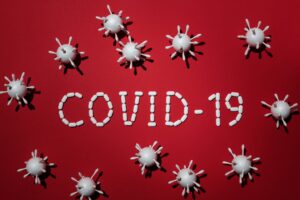The life of an Infection Preventionist (IP) is anything but predictable. No matter how well you plan your day, a single email or phone call can shift your entire schedule. And that’s part of what makes this profession so dynamic and engaging. Some days, the unexpected is exciting; other times, you just hope for a moment of calm.
As an IP, your expertise is constantly in demand. One moment, you’re advising a unit on how to handle a bed bug sighting, and the next, you’re investigating why a patient with COVID-19 was not placed under appropriate isolation precautions. Your role is crucial in ensuring patient safety, regulatory compliance, and the overall effectiveness of infection prevention measures. On a typical day, your responsibilities might include:
1. Surveillance: The Backbone of Infection Prevention
One of the most critical aspects of an IP’s role is surveillance. This involves reviewing cultures—blood, urine, and others—to identify potential healthcare-associated infections (HAIs) such as CLABSI, CAUTI, C. difficile, SSIs, and VAEs.
Beyond HAIs, certain diseases must be reported to the local or state health department. These reporting timelines vary—some require immediate notification upon suspicion, while others must be reported within days or weeks. Conditions like meningitis, invasive Streptococcus pneumoniae, and various sexually transmitted infections fall into this category.
Additionally, surveillance includes monitoring for multidrug-resistant organisms (MDROs), such as Carbapenemase-Resistant Organisms (CROs) and Carbapenemase-Resistant Enterobacterales (CREs). When identified, patients must be placed in long-term contact isolation to prevent transmission.
2. Infection Prevention Consultations
Depending on the facility, infection prevention consults may or may not be a daily task. In my hospital, care teams can request IP consultations for specific issues—such as patients recently diagnosed with C. difficile returning to the hospital or concerns about bed bug exposure. Some consults are straightforward and follow established policies, while others require more extensive investigation and collaboration.
3. Isolation Rounds: Ensuring Compliance and Patient Safety
Isolation precautions are essential for preventing the spread of infectious diseases within healthcare facilities. As an IP, part of your role is ensuring that isolation protocols are followed correctly.
Each day, I review the facility’s isolation list, verifying that patients are appropriately isolated based on their diagnosis. While isolation is crucial for infection control, it also impacts the patient experience. Research shows that patients in isolation often receive less direct care, making it essential to discontinue isolation as soon as it is no longer necessary.
4. Tracers for Regulatory Preparedness
Most healthcare facilities undergo regulatory surveys, such as those conducted by The Joint Commission. Infection prevention plays a significant role in these evaluations.
To maintain readiness, IPs conduct routine tracer audits—assessments of infection control practices within various hospital departments. The frequency and scope of these tracers depend on the facility’s size and the number of IPs on staff. In smaller hospitals, a single IP may be responsible for all tracer audits, while in larger facilities, the workload is typically divided among multiple team members.
Personally, I aim to complete at least one tracer audit per day. Not only is it a regulatory requirement, but it also provides a refreshing break from desk work. These audits offer a valuable opportunity to engage with staff, provide education, and address infection prevention concerns firsthand.
5. Additional Responsibilities
Beyond the core tasks, an IP’s day often includes:
- Meetings: IPs serve as critical resources across multiple hospital departments, which means attending numerous meetings—particularly those related to quality improvement initiatives.
- Device Audits: Reducing CLABSI, CAUTI, and VAE rates requires ongoing monitoring of best practices. Conducting device bundle audits ensures compliance and helps drive improvements in patient safety. In larger facilities, this can be a significant part of the IP’s daily responsibilities.
Final Thoughts
No two days as an Infection Preventionist are exactly alike. The role demands adaptability, attention to detail, and a commitment to continuous learning. Whether conducting surveillance, providing consultations, ensuring isolation compliance, or preparing for regulatory audits, IPs play an indispensable role in patient safety and public health.
While the unpredictability of the job can sometimes be challenging, it is also what makes infection prevention such a fulfilling and impactful career.




